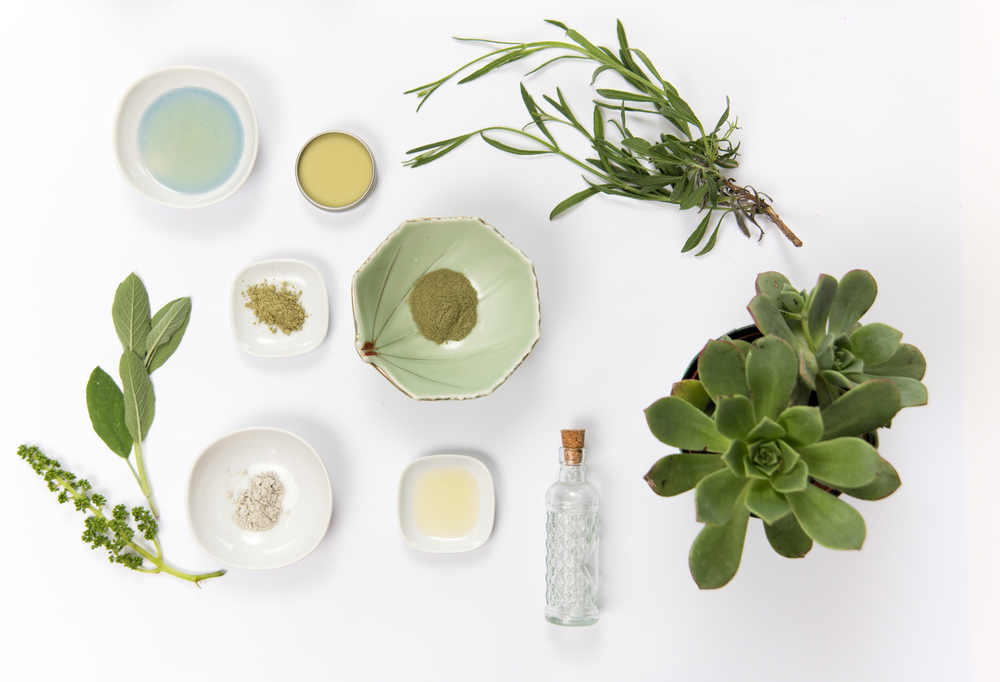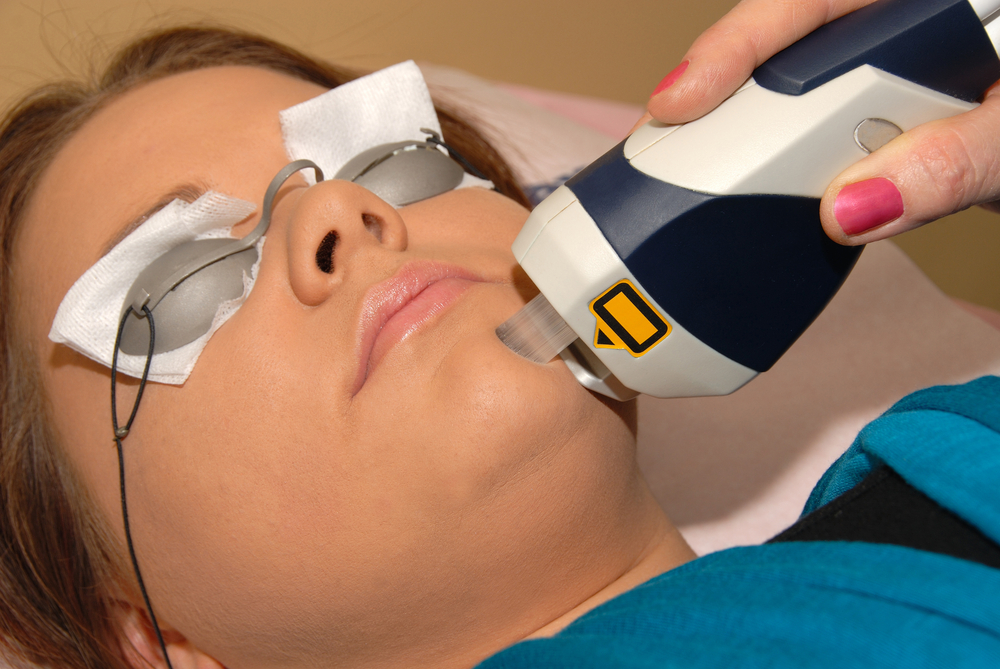What stretch mark treatments work, and which ones are a waste of time and money? Can anything be done to prevent them? We asked the doctors.
Kim Kardashian’s Televised Stretch Mark Treatment
ICYMI reality star, wife of Kanye West and mom to North and Saint, Kim Kardashian, copped to having her stretch marks removed.
Radar.com, TMZ.com and all of the other entertainment tabloids went wild when the big news broke.
Nothing moves the pop culture needle quite like a Kardashian, and Kim’s latest confessional – broadcast via Snapchat – will likely fuel an uptick in requests for and interest in stretch mark removal. Just think of what Kim did for buttock augmentation and what little sister Kylie did for lip enhancement.
According to media reports, the Kim in “Kimye” had laser treatments to remove stretch marks from her breasts that likely developed as a result of her two pregnancies. In her own words: “I feel so excited that I finally did it. I’ve been so scared to do it thinking it hurts so badly, and it didn’t hurt that badly. So I’m so grateful, and I’m so excited.”
And in truth, she is not alone in her desire to delete stretch marks for good. There is little women won’t try to get rid of or at least minimize stretch marks – whether a result of pregnancy or dramatic weight loss and gain.

All About Stretch Marks
But does anything really work or are these claims a bit of a stretch? What treatments are a waste of time and money? And can stretch marks ever be prevented?
Causes
The medical term for stretch marks is striae. They are scar tissue in the second layer of skin that appears as indented streaks on the abdomen, breasts (as in Kim K’s case), hips, buttocks and thighs. Stretch marks are caused by a stretching of the skin, which is why they tend to occur during pregnancy and with rapid weight gain or loss. About 90 percent of women will get them sometime after their sixth or seventh month of pregnancy, according to the American Academy of Dermatology.
Skin is usually fairly elastic and will bounce back, but when the connective tissues are stretched too thin, the normal production of collagen is disrupted, causing the stretch marks. Collagen is the main protein that gives skin its elastic qualities.
Risks
Not everyone will develop stretch marks even during these situations. Other risks include gender (yes, females are more prone to stretch marks than men), genes (if your mom had stretch marks, you may develop them as well), and degree of stress on skin and levels of the stress hormone cortisone, which may weaken elastic fibers in the skin. Oversized breast implants and the topical steroids used to treat such skin conditions as eczema and psoriasis may also cause stretch marks.
“Some people are more prone than others,” says Alisha Plotner, MD, a dermatologist at the Ohio State University Wexner Medical Center in Columbus. “Rapid weight gain during a growth spurt in puberty or pregnancy, obesity, underlying medical issues, and genetic component are the main risk factors.”
Treatments
How (or if) stretch marks are treated depends on several factors including how bothersome the marks are, where they are located, how old they are, skin type, how much downtime you are willing to tolerate, and, of course, cost.
In some cases, self-tanners and sunless tanning products are all that’s needed to camouflage stretch marks. Often, more serious mesures are required.
Abdominoplasty
“Bar none, the best way to get rid of stretch marks on the stomach is an abdominoplasty or tummy tuck,” says Dr. Z. Paul Lorenc, MD, a board certified plastic surgeon based in New York City. A tummy tuck is often one part of a mommy makeover – a combination of procedures designed to restore a mom’s pre-pregnancy body. “You are removing the skin and the stretch marks with this surgery,” he explains.
But it is a surgery – which means downtime and risk.
Microneedling
For newer stretch marks – ie, those that are around a few months old and tend to be reddish or slightly purple – Dr. Lorenc is a fan of microneedling with platelet rich plasma (PRP).
Microneedling stimulates collagen, and the growth factors found in PRP further potentiate the production of collagen, which is in short supply in stretch marks. By making tiny pinpricks in the skin, microneedling starts up a controlled healing process to boost collagen production around the stretch marks. PRP therapy involves drawing blood, isolating the PRP, which contains proteins and other growth factors, and injecting it back into the stretch mark.
“It’s not a one-and-done procedure,” warns Dr. Lorenc. “Multiple treatments are required, typically spaced one a month for three months and then a possible maintenance session at six months. There may be some residual redness after this treatment, but there is no significant downtime.”
Marina Del Ray, California plastic surgeon Dr. Grant Stevens, MD agrees that microneedling is the way to go for newer stretch marks. He often suggests collagen-boosting Retin-A between treatment sessions. His Rx? Three microneedling treatments on average, with more if needed.
Pulsed Laser
Pulsed dye laser is another option for newer stretch marks, says Dr. Plotner. These lasers directly target the redness and also boost collagen and elastin. Like collagen, elastin provides skin with structure and elasticity.
Sciton’s Halo Laser
“For old stretch marks, Sciton’s Halo or a fractionated laser makes sense,” says Dr. Stevens. Older stretch marks tend to be white or silvery in color.
Halo is a hybrid laser that produces fractional ablative results with nonablative downtime by applying both wavelengths in a single pass. Ablative lasers work removing the outermost layers of dead and damaged skin, while nonablative lasers pass through the skin’s upper layers to heat the deeper tissues, stimulating collagen. Stevens generally recommends at least three treatments, and often prescribes collagen-boosting Retin-A between sessions.
Stretch Mark Prevention
“Massaging the area with moisturizer may help pregnant women prevent stretch marks,” says Dr. Plotner. The same Vitamin A derived topical tretinoin that can help reduce stretch marks may also play a role in their prevention. Caution: retinoids are not safe during pregnancy or breast feeding.
In one survey of 773 pregnant women, most said they used a product to prevent or reduce the development of stretch marks during their current pregnancy. More than one third of women had used two or more products, and Bio-oil was the most frequently used skincare product and the most frequently used product among women who used only one product.
Bio-oil contains several oils and a weaker form of Vitamin A. There is a need for high-quality evidence on the effectiveness of Bio-oil and other products, researchers concluded in the September 2016 issue of BMC Pregnancy and Childbirth.

A moisturizing cream which contains an onion extract – like Mederma® Stretch Marks Therapy – may take redness out of newer stretch marks, and improve the appearance. Onions contain anti-inflammatory properties and skin stretching is associated with inflammation.
Unfortunately, there are no guarantees, and no product, technology or spokesperson can or should make any promises about stretch mark prevention and reduction– not even a Kardashian.
Stretch Mark Home Remedies
If attempts to prevent stretch marks prove unsuccessful, and you don’t have the funds for lasers, microneedling or a full-blown abdominoplasty, don’t worry. There are natural and inexpensive remedies you can try at home to help reduce the appearance of stretch marks—by softening skin and reducing discoloration. You probably already have what you need right in your kitchen.
Please note these remedies are not medically proven, and there is no guarantee they will rid you of unsightly stretch marks. However, many people do swear by them, and they are safe to try.
Aloe Vera
This is a popular plant for treating sunburns, but it can also be used for other skin problems. Aloe vera gel, which is found within the thick leaves of the plant, has proven abilities to promote collagen production.
Stretch marks form when the connective tissue in the skin is stretched beyond its limit. Since collagen is the primary component of tissue, increased collagen production can help repair it, reducing the appearance of stretch marks.
Aloe vera is also an effective moisturizer. Apply it directly to the affected area to soften scar tissue. This will not make the stretch marks disappear, but it will help make them less noticeable.
Castor Oil
This vegetable-based oil has culinary, medicinal, and cosmetic uses. It contains ricinoleic acid, which has both anti-inflammatory and skin-conditioning properties.
Stretch marks will change in appearance from red to white over time, but anti-inflammatory agents may help speed up this process, while the skin-conditioning agents keep scars smooth, soft, and subtle.
Sugar
Combine sugar with lemon juice or with a skin-healthy oil to create a natural exfoliating rub for your skin. Gently scrub the stretch marks in a circular motion.
When you exfoliate, you rid the skin of dead skin cells that cling to skin’s surface. This simple act will help your skin appear refined, clear, and smooth. This routine also encourages the growth of new skin cells, which can help reduce the appearance of stretch marks over time.
Lemon Juice
Some people use lemon juice to lighten their hair, but did you know that lemons can also act as a bleaching agent for the skin? Apply directly to the skin, allow to sit for a period of 5-15 minutes, then rinse with lukewarm water. Lemon juice is said to lighten stretch marks, thus reducing their appearance.
Egg Whites
Egg whites may not have the same acidity as lemon juice, but they are also used to lighten skin. Most commonly, they are used in masks for face whitening. However, the same principle can be applied to stretch marks—lightening them to reduce their appearance.
As to whether this really works, beauty blogs are split on the subject of egg whites and their skin lightening properties. Some state that despite the lack of clinical evidence, egg whites can lighten skin on their own. Others suggest that combining egg whites with lemon juice or a similar whitener produces better results.
That said, egg white masks can be an effective skin treatment. They are said to do more than lighten skin; they tighten it. Although the effect is subtle, it may contribute to less visible scarring on the stomach.
Vitamin A
You’ll find vitamin A in many of your favorite facial creams. Topical vitamin A has been used to treat acne and promote healing. It is also said to help skin appear smoother and promote collagen production.
While eating foods with vitamin A is good for your overall skin health—you can easily find it in carrots, sweet potatoes, broccoli, and more—the best way to treat your stretch marks is with a cream or oil containing vitamin A.
Omega-3 Fatty Acids
Omega-3 fatty acids are most commonly found in fish, nuts, and seeds—salmon, mackerel, herring, walnuts, soybeans, flaxseeds, and more. But while it’s important to have omega-3 fatty acids in your diet, you can also apply topical emollients to your skin to enjoy more of their skin-healthy benefits.
These fatty acids have anti-inflammatory properties that have been used to help treat skin conditions like acne, psoriasis, and rosacea. As previously mentioned, anti-inflammatories can help combat the redness that makes stretch marks more noticeable. Apply fish oil or a soy mask on your stretch marks to enjoy this benefit.
These treatments are only the tip of the iceberg. Women have tried almond oil, olive oil, cocoa butter, cucumber juice, and even potato juice to rid themselves of stretch marks. It is not clear if all these treatments are effective. But at the very least, you might find them soothing and, in some cases, delicious.
» If you’d like to learn more about stretch mark removal or share your experience trying one of these home remedies, visit our stretch mark treatment forum.









